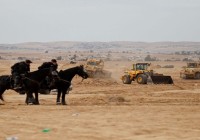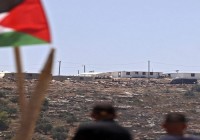90% of our Wheat Consumption is not Palestinian... Palestinian Wheat is Aggrieved
Bread is a key element of nutrition for Palestinians, yet it is usually prepared using imported wheat. Despite the climatic diversity in Palestine, and the suitable agricultural environment, only 10% of the demanded amount of wheat is produced locally in theWest Bank and Gaza.
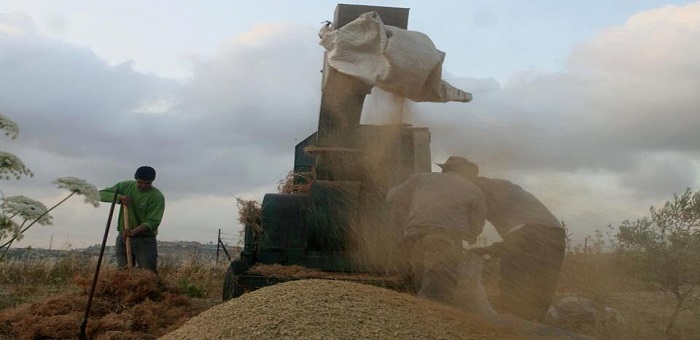
Ramallah- Palestine Economy Portal | Hasna Rantissi- “Keep your wheat local, and keep your bread Taboun”[1]. A campaign that was launched by the 41 year-old planterAaref Daraghmeh from the Rift area in 2012, and is still going; to encourage growing wheat and producing local bread.
However, while planter and activist Daraghmeh, who inherited farming from his family, works very hard to develop wheat cultivating sector; the aimed at target still cannot be accomplished unless there were parallel governmental steps for putting and implementing policies in order to achieve wheat production self-sufficiency, or even only a small part of it.
According the 2010 reports of the Central Bureau of Statistics, the West Bank and Gaza Strip produce 10% of Palestinian wheat demand, and the shortage gets covered through importing.
The total area of cultivated fields in the West Bank and Gaza is about 242 thousand dunams[2], of which 42.2% (102,124 dunams) are cultivated with wheat. Economic returns of wheat amount to about 106,685,300 million NIS forthe seasonal production of wheat as a whole; both grains and straw. Then, a part of the grain production is re-planted, and another part of it is roasted when it is still green to produceFreekeh.
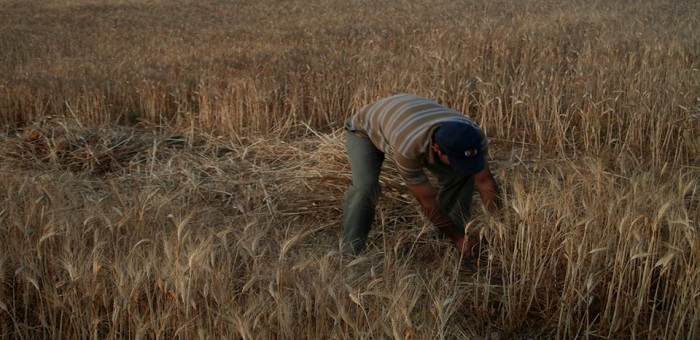
The Planter and the Merchant
Daraghmeh says that though there are several obstacles that wheat planters face; the most important obstacle is the unjust competition from abroad, which has forced many planters to leave this sector due to the high costs of producing wheat locally.
BassamWalweil, president of the Palestinian Food Industries Union and General Manager of Golden Wheat Mills Company, believes that importing wheat in the current Palestinian situation costs less than cultivating it. He attributes this to the lack of area and rainy regions, andsays that growing wheat is not viable, and that “If we grow wheat all over Palestine, we still won’t be able to cover most of our wheat demand.”
Walweil cited the example of Saudi Arabia, which tried to cultivate wheat but found it very costly, therefore shifted back into importing. He also mentioned the Israeli experience, as Israel produces only 100 thousand tons of wheat, while it needs one million tons annually.
Therefore, Walweil called on drawing attention towards growing fruits instead of wheat; “We import several fruits from Israel at high costs. It would be more feasible for us to grow them, as we have the same nature and weather conditions,” he said.
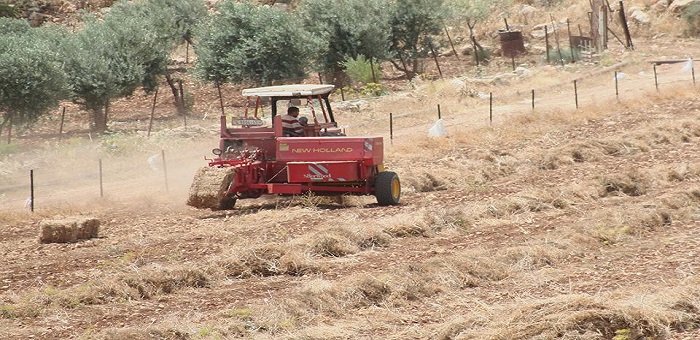
Ministry of Agriculture: We can only cover 30% of the demand
In an attempt to support the few wheat planters, Director of Field Crops Department at the Ministry of Agriculture, AsmahanGhrouf, says the ministry is seeking to solve these problems by signing an agreement between the mills owners and the planters; in order to do justice to the local wheat. However, she refused to reveal the details of this agreement.
The ministry has earlier declared a three-year reforming program to increase local production of wheat. The program relies onseveral tools; includingsoil plowing and management, product management, using the “agricultural cycle,” and management of products through weeding and fertilizing. However, even after implementing this program in all the lands suitable for rain-fed agriculture, Palestinian production still won’t be capable of covering more than 30% of our consumption; says MajdiOdeh, Director of Agriculture in Tubas governorate.
Apparently, this is considered a wise reason for not paying great attention to this sector.
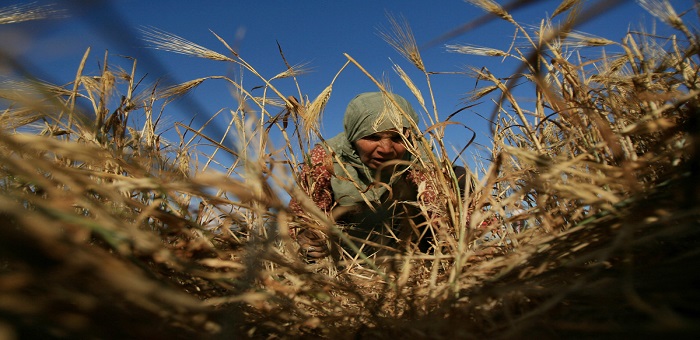
Additional Obstacles
Despite the tremendous improvementin wheat cultivation that occurred this year, as the production was plentiful unlike usual, where each dunam produced between 100-300 kilograms of wheat; Daraghmeh still fears the Israeli occupation would disturb his joy and success.
Here, Daraghmeh remembers some of the hard times he went through, when the Israeli Occupation Forces burnt three thousand dunams of his crops during their military trainings, as well as recently distributing notifications for the people of the Rift area calling on them to evacuate their houses.
In addition to that, Daraghmeh says they suffer from the Occupation’s control over the water springs and other water resources in the area, which have caused agriculture to shift into rain-fed one.
In addition to the obstacles caused by the occupation, there is also the fluctuation of rainfall which affects production quantity, as the amount of water needed differs from one type to another, and from one area to another. Planters’ culture in using traditional methods for stockpiling wheat forms another obstacle. Seeds are usually infected with fungus because of the wrong storing method, which leads to lessening production of these seeds when planted; says Ghrouf.
Then there are the diseases that might infect wheat crops, such as rust. To fight this obstacle, the Ministry of Agriculture sends mentors for agricultural areas that are likely to be infected with diseases; urging farmers to use certain types of pesticides after diagnosing these diseases.
Data of the Central Bureau of Statistics, last published in 2007, shows that wheat cultivationsuffers from fluctuation and declining. The following graph indicates area and production level, and the changes that occurred to them during the years 1993-2007
Facts and Numbers:
- Total Return for wheat cultivation is 106,685,300 million NIS
- Total Return for wheat as grains is 54,501,750 million NIS
- Total Return for wheat as straw is 52,183,520 million NIS
- Average production of wheat per Dunam is 150-180 kilograms
- Average consumption of wheat per person(Palestinian) is 120 kilograms/year
- Average production of wheat is about 41 thousand tons annually
- Wheat demand reaches up to 400 thousand tons annually
